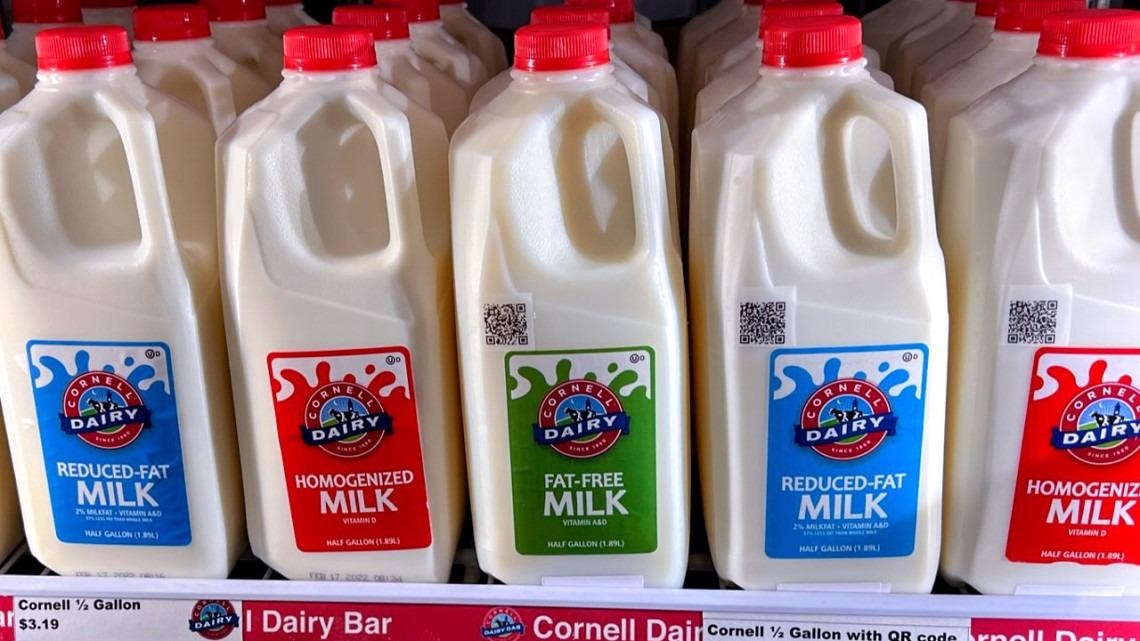QR codes are everywhere in modern-day society, and they provide quick access to more information about products or services. With just a quick scan using a smartphone camera, the relative link or information is quickly generated and displayed on the user’s device.

Image credit: Cornell University
Resultingly, QR codes are becoming increasingly popular in the food industry as they promote interaction and engagement with products through smartphones. This offers consumers rapid access to key product information, which can be more detailed and informative than conventional methods such as printing best-by or use-by dates.
A recent study conducted by a team of researchers at Cornell shows that consumers are embracing QR codes on milk cartons as they offer more accurate information on the drinkability of the milk in the container. The research, which has been published in the Journal of Dairy Science, claims that this kind of information could help reduce food and agricultural waste and benefit the entire food system.
Dairy Waste
In the U.S. alone, dairy products are amongst the most discarded food items both domestically and industrially. The reason for this is that consumers are often confused about when to discard products or gauge drinkability from printed use-by dates; this also leads to good products being left on the shelves and retailers having to eventually throw them out.
Of all discarded dairy products, fluid milk makes up around 65% of dairy product food waste – coming in at a near $6.4 billion annual loss in the U.S. By placing QR codes onto the packing, customers could theoretically scan the code and gain clear and concise information regarding the drinkability of the milk.
For the purpose of the study, participants were offered a choice between QR-coded containers, those with printed best-by dates, or milk with a shorter shelf-life offered at a discounted price.
During two-month study, over 60% of customers purchased the milk with the QR code, showing a considerable interest in using this new technology…This revealed that the use of QR codes on food products can be an innovative way to address the larger issue of food waste.
Samantha Lau, Doctoral Student, Cornell University
QR Codes and IoT
Another significant reason for the need to reduce food waste, especially where dairy is concerned, is also to limit the negative impact on the environment: producing, processing, and transporting milk globally generates 5.3 pounds of carbon dioxide equivalents per pound of milk; this is around 3% of total greenhouse gas emissions, according to data from the United Nations.
Lau and her colleagues hope that the QR codes could also help retailers collect information about the food chain and connect milk with the digital world and IoT.
Eventually, the technology could allow a consumer’s smart fridge to let them know when they are out of milk as QR codes have the capacity to store more information than just a basic expiry date. By paring it with IoT technology, the drinkability of milk can be assessed by the smart fridge and even provide suitable recipes to ensure the product is used to its full potential.
Today, there is an emphasis on making the entire food system more environmentally friendly while ensuring consumers’ needs and safety are met, but this can be a complex challenge if consumers are not offered the appropriate or vague information regarding their chosen products.
Printing QR codes onto packaging may help manage the future of food waste and help consumers make informed decisions with dynamic labeling that satisfies their needs while benefitting both the food system and the environment.
Identifying such opportunities for reducing the environmental impact of the dairy sector while offering nutritious and safe food products becomes central to achieving these goals and could even stretch into other areas of the food and agricultural industry.
References and Further Reading
Friedlander, B., (2022) Consumers embrace milk carton QR codes, may cut food waste | Cornell Chronicle. [online] Cornell Chronicle. Available at: https://news.cornell.edu/stories/2022/06/consumers-embrace-milk-carton-qr-codes-may-cut-food-waste
Lau, S., Trmcic, A., Martin, N., Wiedmann, M. and Murphy, S., (2022) Development of a Monte Carlo simulation model to predict pasteurized fluid milk spoilage due to post-pasteurization contamination with gram-negative bacteria. Journal of Dairy Science, [online] 105(3), pp.1978-1998. Available at: https://www.journalofdairyscience.org/article/S0022-0302(21)01090-0/fulltext
IDFA. (2022) Food Waste. [online] Available at: https://www.idfa.org/food-waste
UN News. (2022) Milk production accounts for nearly 3 per cent of greenhouse gas emissions – UN. [online] Available at: https://news.un.org/en/story/2010/04/335832-milk-production-accounts-nearly-3-cent-greenhouse-gas-emissions-un
Disclaimer: The views expressed here are those of the author expressed in their private capacity and do not necessarily represent the views of AZoM.com Limited T/A AZoNetwork the owner and operator of this website. This disclaimer forms part of the Terms and conditions of use of this website.